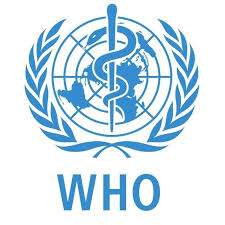Drug resistance to azithromycin, used to treat gonorrhea, is rising, according to a Centers for Disease Control and Prevention analysis. Between 2013 and 2014, incidents of gonorrhea increased by more than 300%, a July 14 CDC news release stated. “This is a distressing sign that the future of current treatment may be in jeopardy,” the release stated.
Gonorrhea is one of the most common STDs in the United States, according to the CDC. In 2010, CDC recommended treating gonorrhea with two antibiotics — an oral dose of azithromycin and an injection of ceftriaxone. While that treatment still works, time may be running out before it’s no longer effective, according to the July 14 release.
According to the Morbidity and Mortality Weekly Report published July 15, researchers collected and surveyed 5,093 gonococcal isolates in 2014. “Of these, 25.3% were resistant to tetracycline, 19.2% to ciprofloxacin, and 16.2% to penicillin (plasmid-based, chromosomal, or both),” researchers wrote in the abstract. Reduced azithromycin susceptibility increased from 0.6% in 2013 to 2.5% in 2014, according to the researchers, who added the increase was greatest in the Midwest, and among categories of sex partners including men who have sex with men, with women and with women and men.
.jpg) CDC statistics show there was a total of 350,062 U.S. cases of gonorrhea in 2014, yielding a rate of 110.7 cases per 100,000 population. The rate increased 5.1% since 2013, and increased 10.5% since 2010, according to the CDC.
CDC statistics show there was a total of 350,062 U.S. cases of gonorrhea in 2014, yielding a rate of 110.7 cases per 100,000 population. The rate increased 5.1% since 2013, and increased 10.5% since 2010, according to the CDC. In 2014 rates of reported gonorrhea cases continued to be highest among adolescents and young adults.
That year, “the highest rates among women were observed among those aged 20-24 years (533.7 cases per 100,000 females) and 15-19 years (430.5 cases per 100,000 females). Among men, the rate was highest among those aged 20-24 years (485.6 cases per 100,000 males) and 25-29 years (370.5 cases per 100,000 males),” according to the CDC website.
In the U.S., antibiotic resistance is related to some 2 million illnesses and 23,000 deaths annually, wrote Ed Silverman in “Dozens of drug makers agree on effort to combat antibiotic resistance,” published Jan. 20, 2016 by StatNews.com.
In late 2014, the White House released a list of steps to develop new antibiotics by 2020 as well as ways to prevent the spread of drug-resistant bacteria, the article stated.
However, “efforts to develop new medicines and diagnostics have been at a logjam,” Silverman wrote. “While acknowledging the need for new products, the pharmaceutical industry has argued that sufficient incentives are lacking when resources can be devoted to such lucrative areas as cancer.”
By: Nurse.Com
ABUJA: Training Schedule for Basic Life Support BLS, Pediatric Advanced Life Support (PALS), Advanced Cardiovascular Life Support ACLS, First Aid, CPR, AED
PORTHARCOURT: Training Schedule for Basic Life Support BLS, Pediatric Advanced Life Support (PALS), Advanced Cardiovascular Life Support ACLS, First Aid, CPR, AED
LAGOS: Training Schedule for Basic Life Support BLS, Pediatric Advanced Life Support (PALS), Advanced Cardiovascular Life Support ACLS, First Aid, CPR, AED




